ZenTao
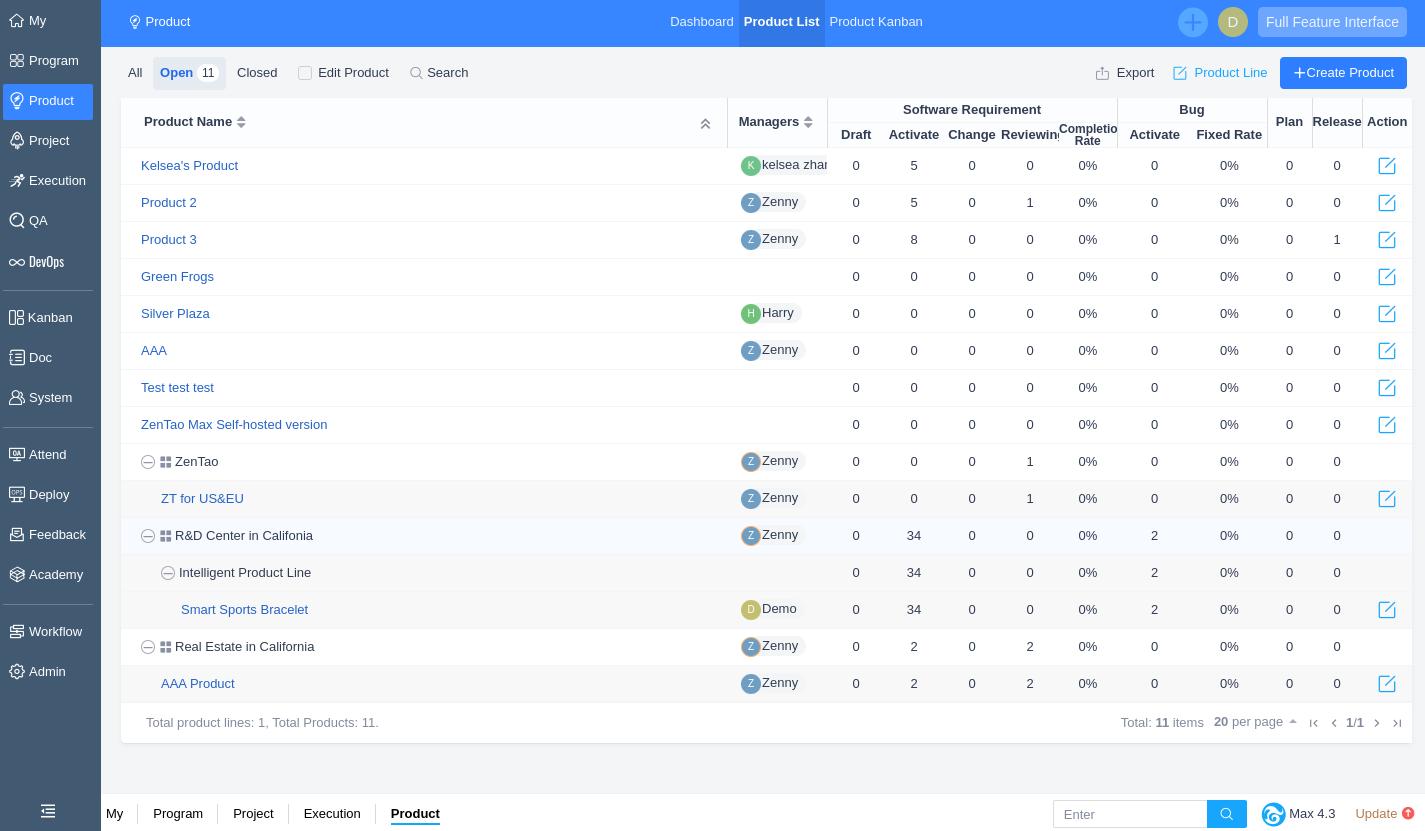
ZenTao is an open-source project management tool that is particularly popular among software development teams. It is designed to support Agile methodologies, including Scrum and Kanban, making it an excellent choice for teams that require flexibility and adaptability in their project management processes. ZenTao offers a comprehensive suite of features, including task management, bug tracking, and document management, all integrated into a single platform. This integration ensures that teams can manage their projects efficiently without the need for multiple tools.
One of the standout features of ZenTao is its emphasis on transparency and collaboration. The tool provides real-time updates on project progress, allowing team members to stay informed about the status of tasks and milestones. Additionally, ZenTao’s customizable dashboards enable users to tailor the interface to their specific needs, ensuring that they have quick access to the most relevant information. This level of customization is particularly beneficial for large teams with diverse roles and responsibilities.
LiquidPlanner
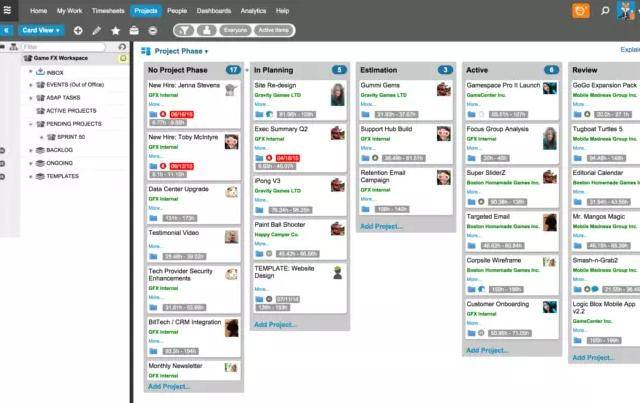
LiquidPlanner is a dynamic project management tool that stands out for its predictive scheduling capabilities. Unlike traditional tools that rely on static timelines, LiquidPlanner uses a probabilistic approach to project planning, taking into account the uncertainty and variability inherent in most projects. This approach allows teams to create more realistic schedules and better manage risks, making it an ideal choice for complex projects with many moving parts.
One of the key advantages of LiquidPlanner is its ability to automatically adjust schedules based on changes in task priorities, resource availability, and project scope. This dynamic scheduling feature ensures that teams can respond quickly to unexpected challenges without disrupting the overall project timeline. Additionally, LiquidPlanner offers robust resource management tools, enabling teams to allocate resources more effectively and avoid overloading team members.
While LiquidPlanner’s predictive scheduling is a powerful feature, it may not be necessary for all types of projects. Teams that work on relatively simple projects with well-defined timelines may find the tool’s advanced features to be overkill. Additionally, LiquidPlanner’s interface can be somewhat complex, which may require a learning curve for new users. However, for organizations that manage complex, high-stakes projects, LiquidPlanner’s predictive scheduling capabilities can be a game-changer.
Plaky
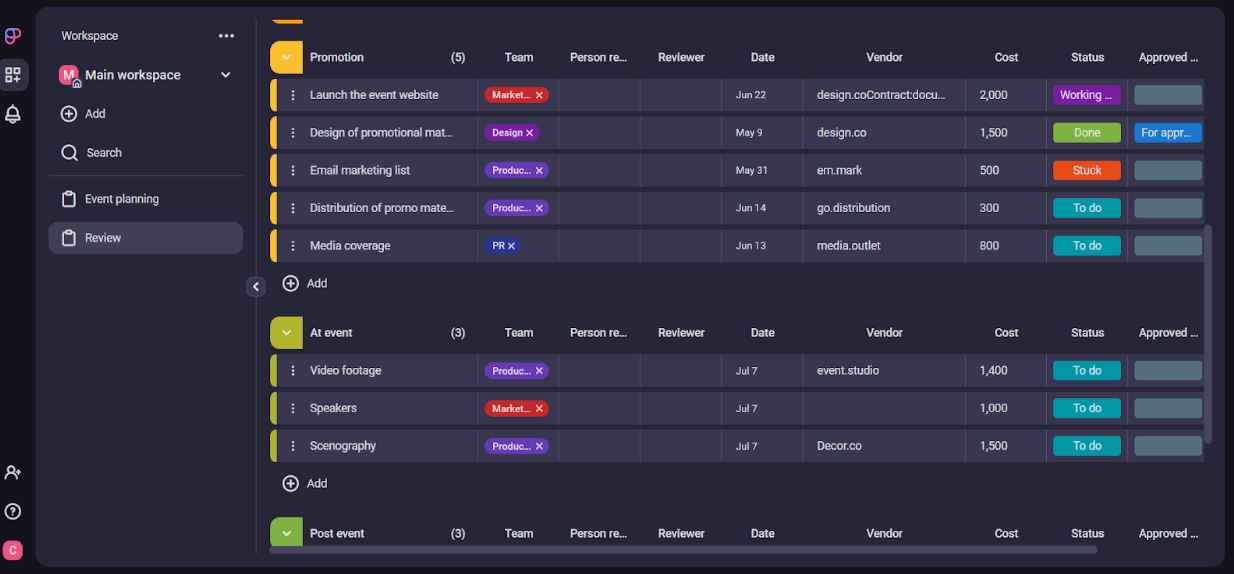
Plaky is a versatile project management tool that is designed to be simple and intuitive, making it an excellent choice for teams that are new to project management software. The tool offers a range of features, including task management, time tracking, and collaboration tools, all presented in a user-friendly interface. Plaky’s simplicity does not come at the expense of functionality, as it provides all the essential features needed to manage projects effectively.
One of the standout features of Plaky is its flexibility. The tool allows users to create custom workflows and boards, enabling teams to tailor the platform to their specific needs. This flexibility is particularly beneficial for teams that work on a variety of projects with different requirements. Additionally, Plaky’s collaboration features, such as real-time commenting and file sharing, make it easy for team members to communicate and work together effectively.
Despite its many strengths, Plaky may not be the best choice for teams that require advanced project management features. The tool’s simplicity means that it lacks some of the more sophisticated capabilities offered by other tools, such as predictive scheduling or advanced reporting. However, for teams that prioritize ease of use and flexibility, Plaky is a highly effective solution that can help streamline project management processes.
Planisware
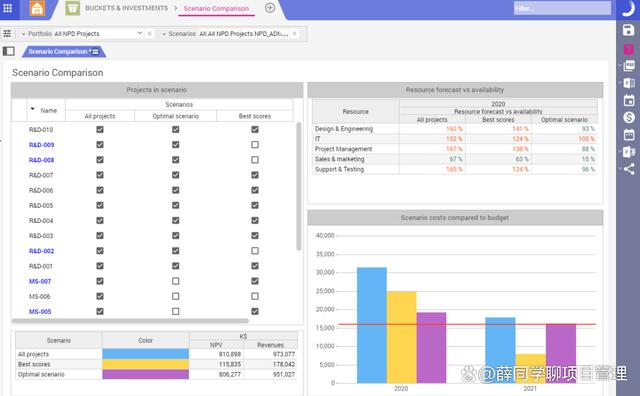
Planisware is a comprehensive project management tool that is particularly well-suited for large enterprises and organizations with complex project portfolios. The tool offers a wide range of features, including project planning, resource management, and financial tracking, all integrated into a single platform. Planisware’s robust capabilities make it an ideal choice for organizations that need to manage multiple projects simultaneously and require a high level of control over their project management processes.
One of the key advantages of Planisware is its scalability. The tool is designed to handle large volumes of data and can be customized to meet the specific needs of different industries, including pharmaceuticals, aerospace, and construction. Additionally, Planisware offers advanced reporting and analytics features, enabling organizations to gain valuable insights into their project performance and make data-driven decisions.
While Planisware’s extensive features make it a powerful tool, they also contribute to its complexity. The tool’s interface can be overwhelming for new users, and it may require significant training to fully utilize its capabilities. Additionally, Planisware’s pricing may be prohibitive for smaller organizations or teams with limited budgets. However, for large enterprises that require a robust and scalable project management solution, Planisware is an excellent choice.
GanttPRO
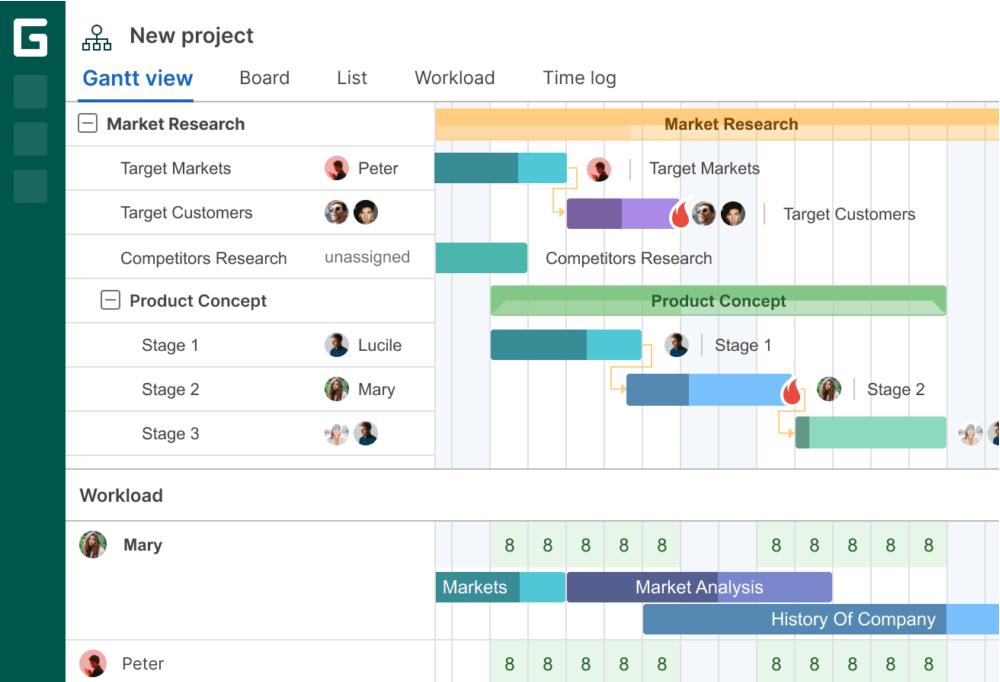
GanttPRO is a project management tool that is specifically designed for creating and managing Gantt charts. The tool offers a range of features, including task management, resource allocation, and time tracking, all presented in a visually intuitive interface. GanttPRO’s focus on Gantt charts makes it an ideal choice for teams that rely heavily on visual project planning and need a tool that can help them create detailed project timelines.
One of the standout features of GanttPRO is its ease of use. The tool’s interface is designed to be user-friendly, making it easy for teams to create and manage Gantt charts without the need for extensive training. Additionally, GanttPRO offers a range of collaboration features, such as real-time updates and commenting, enabling team members to work together effectively. The tool also integrates with other popular project management tools, such as Jira and Trello, making it easy to incorporate into existing workflows.
Despite its many strengths, GanttPRO may not be the best choice for teams that require advanced project management features beyond Gantt charts. The tool’s focus on visual planning means that it lacks some of the more sophisticated capabilities offered by other tools, such as predictive scheduling or advanced reporting. However, for teams that prioritize visual project planning and need a tool that is easy to use, GanttPRO is a highly effective solution.
Wrike

Wrike is a powerful project management tool that is designed to support teams of all sizes, from small startups to large enterprises. The tool offers a wide range of features, including task management, time tracking, and collaboration tools, all presented in a highly customizable interface. Wrike’s flexibility and scalability make it an ideal choice for organizations that need a tool that can grow with them as their project management needs evolve.
One of the key advantages of Wrike is its ability to support a wide range of project management methodologies, including Agile, Waterfall, and Hybrid approaches. This flexibility ensures that teams can use Wrike to manage projects in a way that best suits their needs. Additionally, Wrike offers advanced reporting and analytics features, enabling teams to gain valuable insights into their project performance and make data-driven decisions.
While Wrike’s extensive features make it a powerful tool, they also contribute to its complexity. The tool’s interface can be overwhelming for new users, and it may require significant training to fully utilize its capabilities. Additionally, Wrike’s pricing may be prohibitive for smaller organizations or teams with limited budgets. However, for organizations that require a flexible and scalable project management solution, Wrike is an excellent choice.
nTask
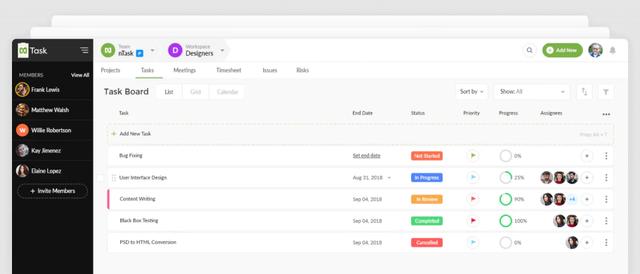
nTask is a project management tool that is designed to be simple and intuitive, making it an excellent choice for teams that are new to project management software. The tool offers a range of features, including task management, time tracking, and collaboration tools, all presented in a user-friendly interface. nTask’s simplicity does not come at the expense of functionality, as it provides all the essential features needed to manage projects effectively.
One of the standout features of nTask is its affordability. The tool offers a range of pricing plans, including a free tier, making it accessible to teams with limited budgets. Additionally, nTask’s collaboration features, such as real-time commenting and file sharing, make it easy for team members to communicate and work together effectively. The tool also integrates with other popular project management tools, such as Slack and Google Drive, making it easy to incorporate into existing workflows.
Despite its many strengths, nTask may not be the best choice for teams that require advanced project management features. The tool’s simplicity means that it lacks some of the more sophisticated capabilities offered by other tools, such as predictive scheduling or advanced reporting. However, for teams that prioritize ease of use and affordability, nTask is a highly effective solution that can help streamline project management processes.
Chanty
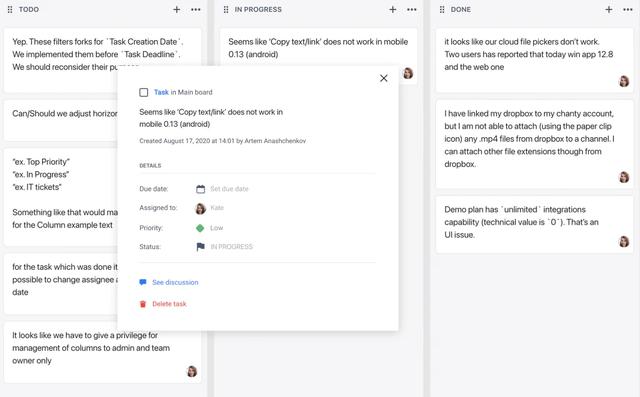
Chanty is a project management tool that is designed to enhance team collaboration and communication. The tool offers a range of features, including task management, file sharing, and real-time messaging, all integrated into a single platform. Chanty’s focus on collaboration makes it an ideal choice for teams that need a tool that can help them communicate and work together more effectively.
One of the standout features of Chanty is its simplicity. The tool’s interface is designed to be user-friendly, making it easy for teams to get started without the need for extensive training. Additionally, Chanty offers a range of integrations with other popular tools, such as Trello and Asana, making it easy to incorporate into existing workflows. The tool also offers a free tier, making it accessible to teams with limited budgets.
Despite its many strengths, Chanty may not be the best choice for teams that require advanced project management features. The tool’s focus on collaboration means that it lacks some of the more sophisticated capabilities offered by other tools, such as predictive scheduling or advanced reporting. However, for teams that prioritize communication and collaboration, Chanty is a highly effective solution that can help streamline project management processes.
Monday
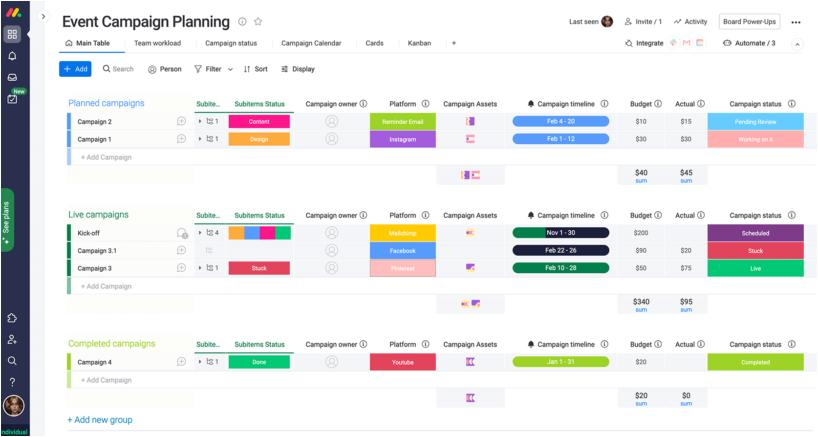
Monday is a highly customizable project management tool that is designed to support teams of all sizes and industries. The tool offers a wide range of features, including task management, time tracking, and collaboration tools, all presented in a visually intuitive interface. Monday’s flexibility and scalability make it an ideal choice for organizations that need a tool that can grow with them as their project management needs evolve.
One of the key advantages of Monday is its ability to support a wide range of project management methodologies, including Agile, Waterfall, and Hybrid approaches. This flexibility ensures that teams can use Monday to manage projects in a way that best suits their needs. Additionally, Monday offers advanced reporting and analytics features, enabling teams to gain valuable insights into their project performance and make data-driven decisions.
While Monday’s extensive features make it a powerful tool, they also contribute to its complexity. The tool’s interface can be overwhelming for new users, and it may require significant training to fully utilize its capabilities. Additionally, Monday’s pricing may be prohibitive for smaller organizations or teams with limited budgets. However, for organizations that require a flexible and scalable project management solution, Monday is an excellent choice.
Forecast
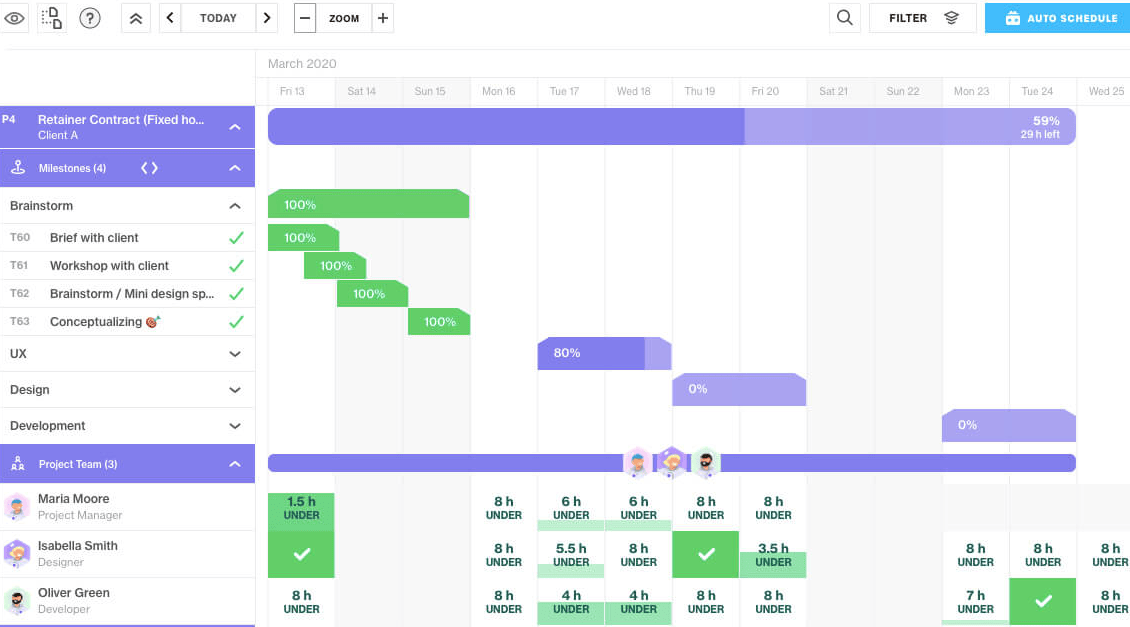
Forecast is a project management tool that is designed to support resource management and project planning. The tool offers a range of features, including task management, time tracking, and collaboration tools, all integrated into a single platform. Forecast’s focus on resource management makes it an ideal choice for organizations that need to allocate resources effectively and ensure that projects are completed on time and within budget.
One of the standout features of Forecast is its ability to provide real-time insights into resource allocation and project performance. The tool’s advanced reporting and analytics features enable teams to identify potential bottlenecks and make data-driven decisions to optimize resource usage. Additionally, Forecast offers a range of integrations with other popular tools, such as Jira and Trello, making it easy to incorporate into existing workflows.
Despite its many strengths, Forecast may not be the best choice for teams that require advanced project management features beyond resource management. The tool’s focus on resource allocation means that it lacks some of the more sophisticated capabilities offered by other tools, such as predictive scheduling or advanced reporting. However, for organizations that prioritize resource management and need a tool that can help them optimize resource usage, Forecast is a highly effective solution.
FAQ
1.What is the best project management tool for Agile teams?
For Agile teams, ZenTao is an excellent choice due to its support for Scrum and Kanban methodologies. Its emphasis on transparency and collaboration makes it particularly well-suited for Agile environments.
2.Which project management tool is best for small teams with limited budgets?
nTask is a great option for small teams with limited budgets. It offers a range of essential features at an affordable price, including a free tier that provides access to basic project management capabilities.
3.Can I use multiple project management tools for different projects?
Yes, it is possible to use multiple project management tools for different projects, especially if each tool offers unique features that are better suited to specific project requirements. However, it is important to ensure that the tools can integrate with each other to avoid duplication of effort and maintain consistency across projects.
ARTICLE TITLE :Project management tool evaluation: in-depth evaluation of 10 industry-leading brands ,AUTHOR :ITpmlib












